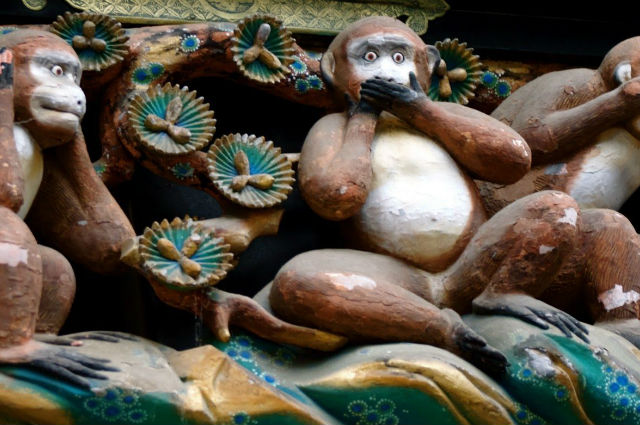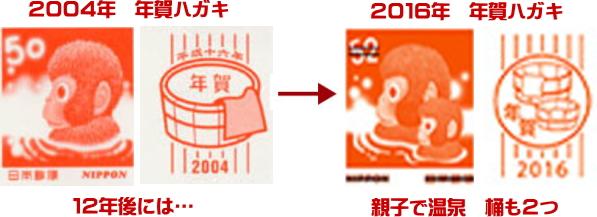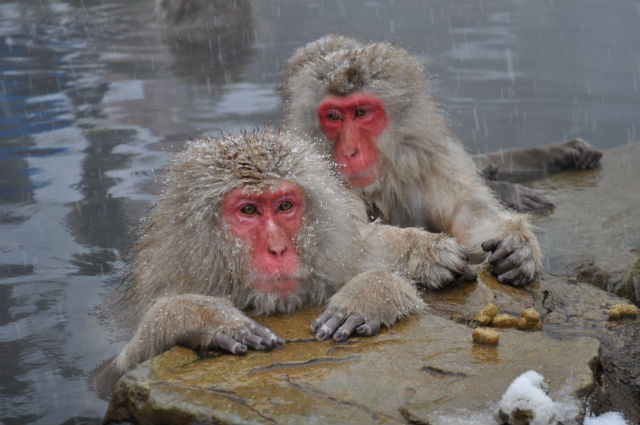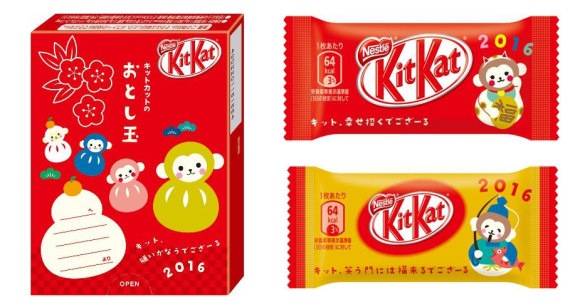On the tailcoat of Nikkei’s rather bleak predictions for the Year of the Monkey, using “monkey” as an acronym (Middle East, Odds in elections, New paradigm of the monetary reserve, Korean peninsula, Exits and Entries (à la Greece), and the Yen), as the focus, come a series of Japanese quirks on the brink of 2016. Many of these are trends that come around every New Year, while some of them having us scratching our heads…
By Natalie Jacobsen

Image: Japan in Perspective
You may be able to spot some of these trends yourself out on the streets of Tokyo. Some of them will be blatant: glaring shrine and temple advertisements for the new omamori celebrating the monkey, or shopping mall windows slapped with grinning monkey faces, summoning shoppers to their New Year sales. Other odes to the Year of the Monkey are more subtle, so you’ll need to keep your eyes peeled:
Seeing red? The recent trend in Japanese clothing shops is not a result of fashion evolution, but rather a homage to the upcoming Year of the Fire Monkey. The iconic snow monkeys of Japan, with their red faces and behinds, are the inspiration behind the influx of red clothing – especially red undergarments.
In a country where professionalism is always presented in a suit of blacks, blues, ,whites, and beiges, red doesn’t have much a place. That’s when the undergarment alternative comes in. Safely tucked away from public eye, people are already snapping them up, happily claiming they’ll wear them as if they were an amulet, feeling the boost spiritually and personally. The lucky underwear are available across the nation at all of the regular hotspots, including Isetan, Seibu, and 109. “The Red Shop,” Maruji in Sugamo, has a large number of red items, including all the under garment styles one could desire. Twists and other designs are expected from ruling Japanese lingerie stores Peach John and Amo’s Style, as well as in Fukusuke‘s menswear. Perhaps Victoria’s Secret will have a place in Japan again?
The history of red underwear being associated with the Year of the Monkey in Japan seems to be far-fetched, however. Over the past ten years, red under garments have been increasingly popular for older customers, just as is dying hair odd colors post-retirement. Furthermore, red is not a color usually tied to the Year of the Monkey: white, gold, and blue typically are the “lucky” colors, and red, to devout zodiac followers, is said to be avoided during this year. However, one point in the favor of the red garments is that “monkey” (saru, 猿) shares the same pronunciation as the verb for “go away” (去る), and since red is meant to ward off disease, they go, almost, hand-in-hand. With an increase in AIDS awareness and HIV testing in Japan, this seems like a step in the right direction, though we aren’t sure how far we can stretch the red underwear gig. We’ll leave the conclusion-reaching to you.

Image: @kitteclub via Twitter
Something of more substance, though, can be found at Japan Post: monkey stamps! Each year, Japan Post releases a new zodiac stamp – and each year, it brings a new incentive to start a collection. The zodiac stamps are known for featuring a short, stamp-sized story that continues with the following zodiac year. We last saw the monkey in 2004, when Japan Post released a stamp featuring a solitary monkey bathing in an onsen. This year, that monkey had a little baby!
A ripple of chit-chat on Twitter debated if the monkey was a single mother, and whether there was any opinionated discourse coming from Japan Post on that matter. We applaud people thinking beyond the edges of a stamp, but are also hesitant to grant any more credit to Japan Post, as there is literally only so much room they have to work with to tell a story.
And for those who couldn’t care less about stamps or omamori or what color their under things are, and just want the edibles, now it’s your turn: Kit Kat has started releasing their annual “otoshidama” (お年玉); New Year’s boxes celebrating the Year of the Monkey. With room for a message to a friend or loved one, these cute little boxes can be gobbled up and then kept as a souvenir, if that’s your thing. At least it’ll be more affordable than the gold-plated Kit Kat bars that have gone on sale from December.
On a more serious note, it’s worth noting that for each of the Years of the Monkey that have occurred in the last thirty or forty years, there has been a measurable spike of interest in animal rights across Japan. In a country that still uses monkeys as entertainment in parks, events, and during shows, progression towards full rights for animals has been slow, to say the least. But in 1992, and again in 2004, and now approaching 2016, there is renewed desire to help secure basic rights for typically domesticated animals. In 2004, the famous “monkey trains” were suspended after years of quiet protests, and petting zoos have seen a decrease in visitors. Local shelters (ALIVE), animal advocates (ARFJ) and international groups (WWF) are constantly looking for volunteers and people to sign petitions and help donate to various causes to promote welfare of animals in Japan. Though, seeing as Japan is willing to openly defy the United Nation’s request to not hunt whales, we doubt there will be substantial leaps until further down the road.
With each new zodiac year comes a litany of superstitions, a laundry list of materialistic pieces to collect, and quirky themes to follow us until the next year. Whether or not you’re a monkey, may you find peace and steer clear of at least some of the mischievous behavior expected in 2016.
Main image: Wikipedia










